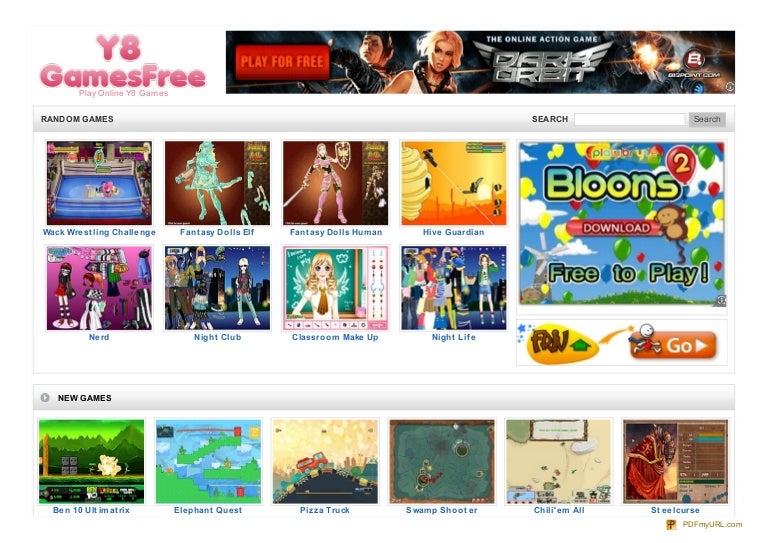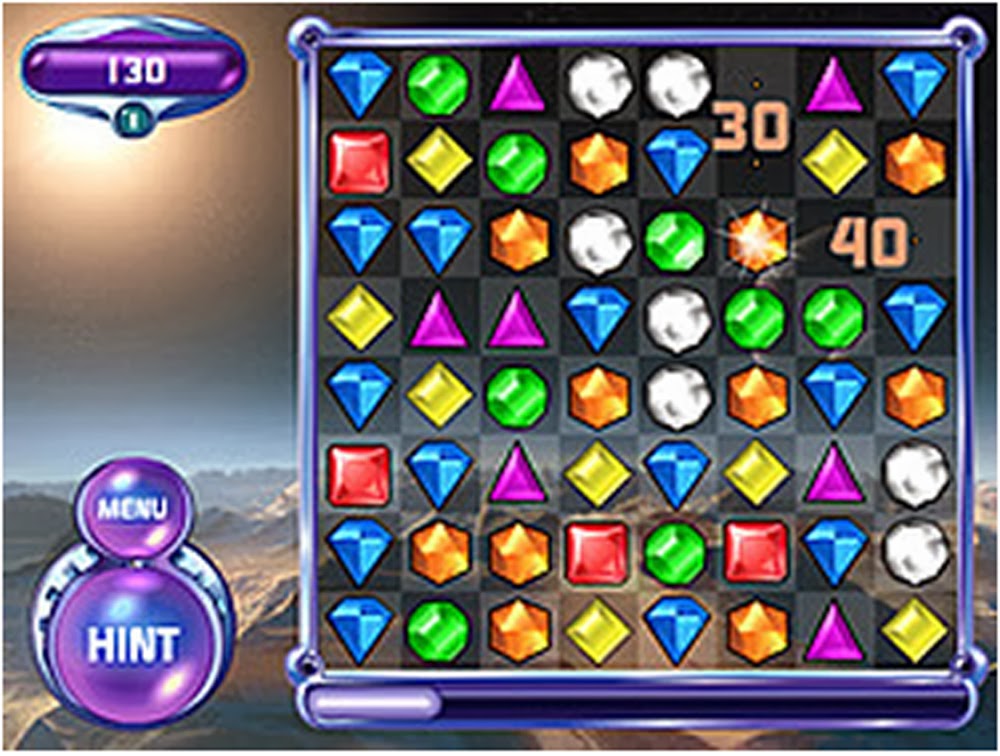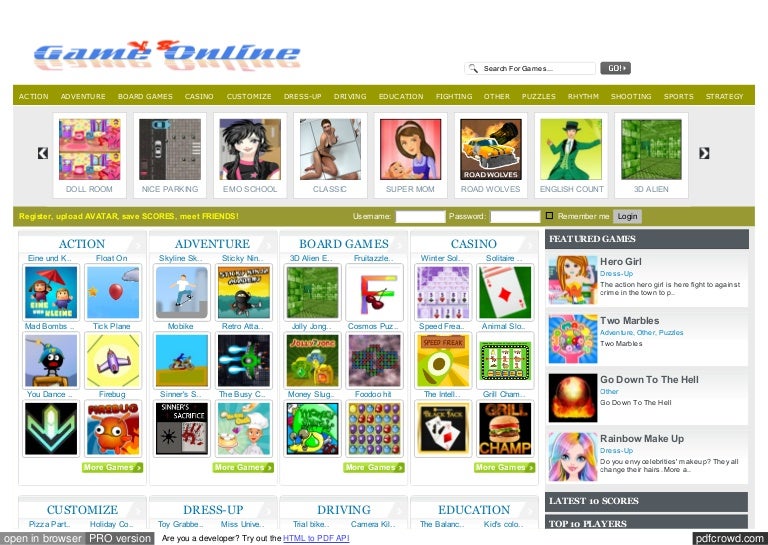8y games take players on an exhilarating journey through vibrant worlds filled with challenges and camaraderie. With a plethora of genres like platformers, puzzle games, and adventure games, this realm caters to diverse gaming preferences, ensuring there’s something for everyone. Each genre brings its unique set of features and gameplay mechanics, appealing to various age groups and enriching the overall gaming experience.
The evolution of 8y games has been significantly shaped by technological advancements, particularly in graphics and artificial intelligence. As developers embrace innovative design processes, they create captivating gameplay experiences that resonate with players. Notable titles exemplify this trend, showcasing how creativity and technology intertwine to produce engaging content.
Popular Genres in 8Y Games

The world of 8Y games is an exciting landscape filled with diverse genres that cater to a range of gaming preferences. These genres not only define the mechanics and gameplay but also significantly influence the overall player experience. Among the most prominent genres in 8Y games are platformers, puzzle games, and adventure games, each offering unique attributes that attract various age groups and skill levels.
Platformers are characterized by their emphasis on jumping and climbing between platforms, often featuring intricate level designs that challenge players’ reflexes and timing. Games like “Super Mario Bros.” exemplify this genre, where players navigate through vibrant worlds filled with obstacles and enemies. The appeal of platformers lies in their accessibility; they are easy to pick up, making them suitable for younger audiences while still providing depth for more seasoned players.
Genre Features and Gameplay Mechanics, 8y games
Different genres within 8Y games possess distinct features and gameplay mechanics that contribute to their uniqueness. Understanding these differences can help players choose games that align with their interests.
- Platformers: These games typically include mechanics such as double jumps, wall jumps, and power-ups. Players often face timed challenges and collectible items, enhancing the excitement and replay value. Notable titles include “Celeste” and “Rayman Legends,” which feature intricate level designs that encourage exploration.
- Puzzle Games: This genre emphasizes problem-solving and critical thinking. Mechanics often involve matching colors, solving riddles, or navigating mazes. Games like “Tetris” and “Candy Crush Saga” have captivated audiences by offering progressively challenging levels that stimulate the brain. The simplicity of their rules makes them appealing to a wide age range.
- Adventure Games: These games focus on storytelling and exploration. Players typically engage in quests, interact with characters, and solve various puzzles to advance the narrative. Titles like “The Legend of Zelda” series and “Monkey Island” blend immersive storytelling with engaging mechanics, attracting players who appreciate narrative depth.
The appeal of these genres extends beyond mere entertainment; they also serve educational purposes. For instance, puzzle games enhance cognitive skills such as memory and logic, while platformers can improve hand-eye coordination. The combination of entertainment and education makes 8Y games particularly attractive to parents looking for appropriate gaming options for their children.
The various genres in 8Y games cater to a broad spectrum of age groups and gaming preferences. Younger players are often drawn to the vibrant graphics and straightforward mechanics of platformers, while older gamers may prefer the engaging narratives and strategic elements found in adventure games. This diversity ensures that there is something for everyone within the realm of 8Y gaming, fostering a rich community of players united by their love of interactive entertainment.
Development Trends in 8Y Games

The landscape of 8Y games has been significantly shaped by rapid technological advancements and innovative design methodologies. These developments not only enhance player experience but also redefine how games are created and consumed. As developers push the boundaries of creativity, the integration of cutting-edge technology continues to play a pivotal role in the evolution of the gaming industry.
Technological advancements are at the forefront of influencing 8Y game development. The incorporation of high-definition graphics, artificial intelligence, and cloud gaming capabilities are transforming the way games are developed and played. With graphics engines like Unreal Engine and Unity becoming more accessible and powerful, developers can produce stunning visuals that immerse players in intricate worlds. Additionally, advancements in AI allow for more dynamic gameplay, where non-playable characters (NPCs) exhibit realistic behaviors, contributing to a more engaging experience.
Technological Innovations in 8Y Games
The integration of innovative technologies has led to remarkable advancements in the development of 8Y games. These innovations not only improve visual fidelity but also enhance gameplay mechanics and player interactions.
1. High-Definition Graphics:
The shift to high-definition graphics provides players with visually stunning environments that enhance immersion. Games like “The Legend of Zelda: Breath of the Wild” have set benchmarks with their detailed landscapes and dynamic weather systems that contribute to a living world.
2. Artificial Intelligence:
AI algorithms are increasingly employed to create more lifelike interactions within games. For instance, in games like “Ghost of Tsushima,” enemy AI adapts to player tactics, making each encounter unique and challenging.
3. Cloud Gaming:
The rise of cloud gaming platforms, such as Google Stadia and NVIDIA GeForce NOW, allows players to access high-quality games without the need for powerful hardware. This democratization of gaming opens up opportunities for broader accessibility and diverse player bases.
4. Virtual Reality (VR) and Augmented Reality (AR):
The utilization of VR and AR technologies is reshaping gameplay experiences. Titles like “Beat Saber” and “Pokémon GO” illustrate how immersive experiences can engage players in innovative ways, blending real-world elements with digital gaming.
Design Processes in 8Y Game Development
The design processes involved in creating 8Y games have evolved to incorporate collaborative methodologies that emphasize player feedback and iterative development.
The Agile methodology has gained prominence, allowing developers to adapt to changes and refine their games based on player testing. This approach fosters an environment of continuous improvement and ensures that the final product resonates with the target audience. Additionally, incorporating user experience (UX) design principles ensures that gameplay mechanics are intuitive and enjoyable.
In successful developments, games like “Among Us” exemplify how community feedback can lead to feature enhancements and balance adjustments that keep the player base engaged. The iterative design process also emphasizes the importance of playtesting, where developers can observe player behaviors and make data-driven decisions to enhance game performance.
Examples of Innovative 8Y Games
Several successful 8Y games have made a significant impact through their innovative approaches to gameplay design and technology integration.
– “Hades”: This rogue-like dungeon crawler utilizes a unique narrative structure where player choices impact the story’s progression. The game’s rich art style and engaging combat mechanics showcase how innovative storytelling can enhance gameplay.
– “Celeste”: Focusing on mental health themes, “Celeste” employs pixel art and tight controls to create a challenging platforming experience. Its success is attributed to its heartfelt narrative and the seamless integration of gameplay with emotional storytelling.
– “Fortnite”: As a pioneer of the battle royale genre, “Fortnite” continuously evolves through regular updates and community-driven events. Its cross-platform capabilities and social aspects demonstrate the importance of community engagement in modern gaming.
These examples highlight how technological advancements and innovative design methodologies are shaping the future of 8Y games, offering players unique and memorable experiences.
Community and Social Aspect of 8Y Games

The community and social dynamics surrounding 8Y games play a pivotal role in shaping players’ experiences. As gaming becomes increasingly interconnected, the social aspects enhance user engagement and game longevity. Players are no longer just solitary gamers; they are part of vibrant online communities that foster collaboration, competition, and shared experiences.
Role of Online Communities and Forums
Online communities and forums serve as the backbone of the social experience in 8Y games. These platforms allow players to connect, share strategies, and discuss game mechanics. The significance of these communities can be highlighted through the following aspects:
- Knowledge Exchange: Players share tips, tricks, and insights that can significantly improve gameplay. This knowledge sharing fosters a collaborative environment where even new players can quickly become adept at the game.
- Feedback Mechanisms: Developers often monitor community discussions to gain insights into player preferences and issues, enabling them to make informed updates and enhancements to the game.
- Event Organization: Communities frequently organize in-game events, contests, and tournaments, bringing players together and enhancing their overall gaming experience.
- Support Networks: Online forums provide a support system for players experiencing difficulties, both in-game and in terms of technical issues.
Multiplayer Features and Player Interaction
The integration of multiplayer features into 8Y games significantly enhances player interaction and engagement. These features allow players to collaborate or compete with one another, transforming the gaming landscape. Key elements include:
- Co-op Gameplay: Many 8Y games include cooperative modes, where players work together to achieve common goals, fostering teamwork and camaraderie.
- Competitive Modes: Competitive multiplayer features add an exciting layer of challenge, as players face off against one another, enhancing the thrill of the gameplay experience.
- Social Tools: In-game chat systems and voice communication tools enable real-time interaction, making it easier for players to strategize and form friendships.
- Community Events: Regularly scheduled multiplayer events or seasonal challenges motivate players to engage with the game and each other more actively.
User-Generated Content and Modding Impact
User-generated content (UGC) and modding significantly contribute to the longevity and popularity of 8Y games. These elements allow players to express creativity and personalize their gaming experiences. The importance of UGC and modding can be summarized as follows:
- Extended Gameplay: Mods can introduce new content, mechanics, or narratives, rejuvenating interest in the game and extending its lifespan beyond the original developer’s updates.
- Community Creativity: Players can create and share their own levels, characters, or skins, fostering a sense of ownership and community pride.
- Learning and Skill Development: Engaging in modding teaches players about game design principles, programming, and creativity, attracting a broader audience interested in game development.
- Enhanced Player Retention: Regularly updated user-generated content keeps players returning to the game, as there is always something new and exciting to experience.
“Communities transform games from mere entertainment into collaborative experiences that enrich player engagement and satisfaction.”
Closure

In summary, the world of 8y games is an ever-evolving landscape where genres, technology, and community converge, creating a vibrant gaming ecosystem. The strength of online communities and the rise of user-generated content have further enhanced player engagement, ensuring that 8y games remain popular and relevant. As we look towards the future, the potential for growth and innovation within this space seems limitless.

